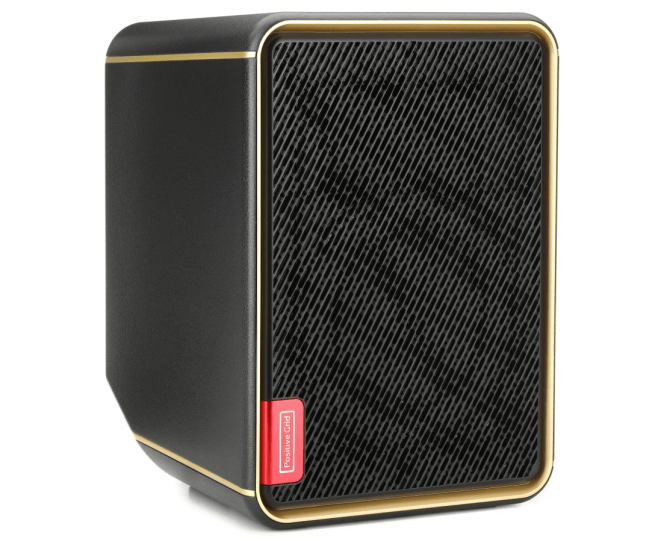We may earn an affiliate commission when you buy through our links.
Busking just got a lot easier.
As a musician in 2025, I feel like busking has never seemed like a more enticing prospect than it does in this current moment. No joke, my last two local shows were canceled for reasons beyond my control (one because the venue decided to call it quits on hosting shows altogether!).
There's the disappointment that comes with relying on an unprecedentedly shaky live entertainment infrastructure. And then there's the unsustainability of still splitting four ways the same $200 payout we've been getting since 2010. It’s enough to make me want to just set up solo at the local farmer’s market with a jug and see what happens.
So it definitely doesn’t hurt that I just got my hands on a new Positive Grid Spark EDGE. An all-in-one portable PA/guitar amp/USB interface/Bluetooth speaker (karaoke machine, learning tool, etc., etc), the Spark EDGE, on paper, definitely sounds like it would be the ideal tool for buskers. Portable, powerful, and versatile, it boasts everything you need to quickly and easily set up and break down for guerrilla performances, cafe gigs, or any solo or small band scenario you can think of.
I just got done putting it through its paces, and (spoiler alert!) it was a blast. I was already a fan of Positive Grid (and the Spark App), going back to my Spark Mini review, and it’s safe to say that Positive Grid has done it again with the Spark EDGE. Read on to find out more about my experience with the Spark EDGE and whether it’s just the busking solution you’ve been looking for.
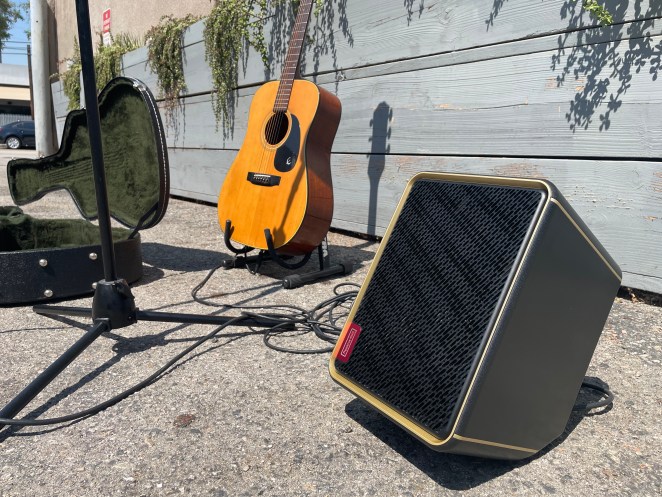
Quick Overview
Specs
Type: Solid State Combo Guitar Amp/PA
Number of Channels: 4
Output Power: 65W
Speaker Size: 1 x 6.5" Custom Designed Woofer, 1 x 1" Custom Designed Horn Tweeter
Effects: 50 x effects
Amp Modeling: 36 x amp models
EQ: 3-band EQ
Inputs: 2 x 1/4"-Combo (Ch 1, Ch 2), 2 x 1/4" (Ch 3/L, Ch 4/R)
Outputs: 2 x 1/4" (L/Mono, R)
MIDI I/O: 1 x 5-pin DIN (In)
USB: 1 x USB-C (2x2 interface)
Bluetooth: v5.0
Headphones: 1 x 1/8"
Software: Spark App
Power Source: 20V DC 3.25A Power Supply (included), Spark Battery (sold separately)
Weight: 13.66 lbs.
Unboxing and Overview
My first impression upon unboxing the Spark EDGE was the instant recognition that setup was going to be a breeze. It’s just one piece, like any amp (no stands, connectors, or external speaker cabs), plus the power supply and USB connector cable. It’s lightweight, and smaller than I might have expected based on the size of the box—but looks to be built tough, with a heavy-duty grille that's designed to endure the rigors of the traveling musician's life.
There’s a fairly simple control panel on the top for toggling presets and individual channel volume controls, as well as a back panel with master volume and EQ controls and input/output jacks. The battery lives here as well. A comfortable built-in handle allows you to grab it and go, plus it’s got an angled corner at the back so you can tilt it back for better sonic spread.
So, portability is a given—but can its 65 watts of power deliver an impressive sound for its size?
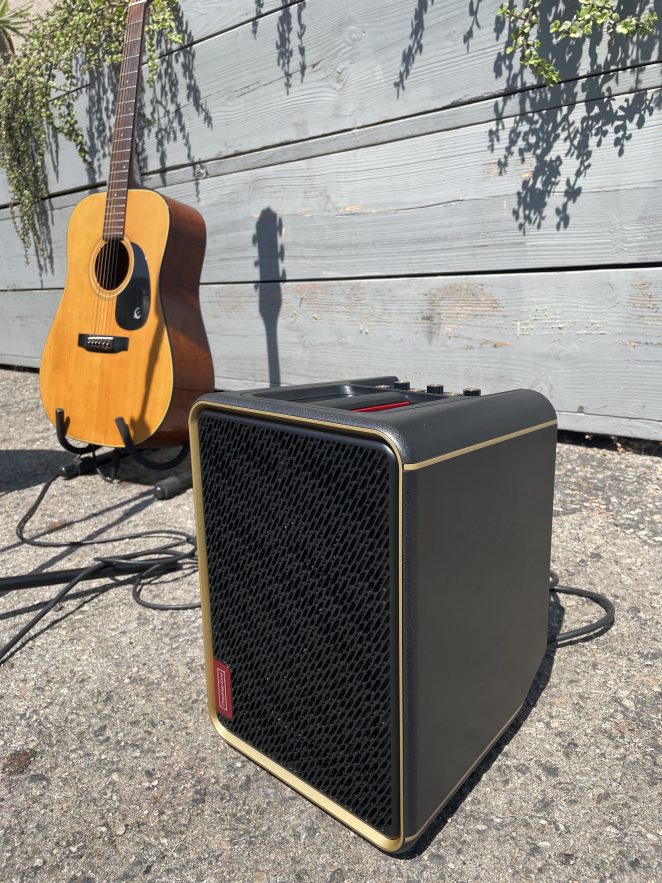
Testing… 1, 2
First things first—I went ahead and just plugged in a mic and a guitar and started messing with presets. I quickly realized that I had the inputs out of order—the first channel’s presets were definitely designed with guitar in mind, and channel 2 for vocals. (Insane crunch on vocals is not what most vocalists typically go for, but you do you!)
Once I sorted that out, I was able to toggle between a few variations on clean and distorted guitar tones on channel 1, and different levels of reverb, echo, and slightly distorted/compressed vocal sounds on channel 2. And while it did make me sound a bit like Julian Casablancas, I’m guessing that distorted tone was likely meant for bass, for which there are presets and customizable tones as well!
I just had to crank it up all the way to see how loud this thing goes. The result? I would say it goes pretty loud, but probably not loud enough to compete with a full drum kit (though I do intend to test this!). [UPDATE: I tested this and it is in fact loud enough to jam with a full band, at a reasonable level!] Your best bet will be solo or small combo performances, using the four inputs to support guitar, bass, keyboard, vocals, and a drum track or machine rather than a full kit behind you. [Go ahead and try for yourself! Of course, it depends on the drummer's playing style.]
But that said, the tones sound AWESOME, and it’s just what I have been itching for since I got my Spark MINI. Which is to say, really, really authentic-sounding tones, but emanating from a larger speaker to move some air and get a fuller-sounding guitar tone. I typically use my MINI as a headphone amp, and I definitely enjoy the guitar sounds that way—but if you have a dedicated jam room or studio where you can turn up, you’ll really enjoy using this amp just for the guitar settings alone.
Plus, there’s a 60-second looper for solo jamming and can stream from any Bluetooth-equipped device, so you can dial up backing tracks on the fly. I can really see busking with this thing being a breeze, and I can’t wait to try it out in the field.
As for downsides: I will say, it's technically got four channels, yes—but the brilliant Spark effects are only available on the first two. Worth noting.
I also wanted to test out the battery-powered functionality, but alas—the battery is not included—please take note and plan accordingly! And, oh yeah, it lacks phantom power, so your condenser mics are worthless here (I really wanted to try my Ear Trumpet Labs mics... womp womp).
Connectivity
Spark EDGE isn’t just designed for live performance, though—it’s a great recording tool as well. It’s got a USB-C out that goes straight into your computer’s USB hub, so you can use it as a recording interface.

Whether dialing up individual guitar sounds for tracking, or recording your live performances, this is a really cool feature that basically doubles the value. I admit I struggled a bit with adjusting the levels of the separate tracks when recording, however—you might need to compensate using the gain in your DAW instead.
Plus, there are ¼” stereo outs (if you do decide to play, ahem, indoors), and a headphone jack for silent sessions as well.
Spark App and Effects
Okay, finally, about those tones… The meal ticket with Spark devices is the integration with the Spark app, where you can dial in practically limitless tone variations, and save your settings for later too. You can even program the amp’s presets with your own custom tones, so you can switch them on the hardware as well as the app.
There are 36 amp models and 50 effects “pedals” to choose from, and the possibilities are basically endless. The amps and effects sound incredible, and it’s so, so fun to just be able to pull up pretty much any tone you can dream of in real time. It’s super useful that you can save them to the hardware, too.
You can essentially transform your Spark EDGE into a Marshall JCM, a Fender Twin, a Vox AC30, a Roland Jazz Chorus—pretty much any amp you can think of! Plus, virtually equip a full pedalboard with drive and distortion pedals, reverb, chorus, delay, flange, etc—all based on classic pedals and effects units. So. Much. Fun.
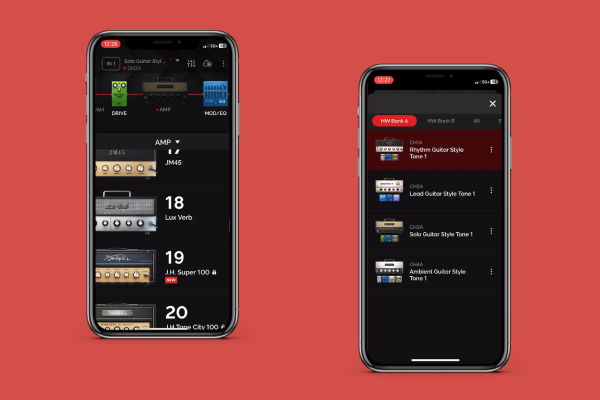
There are fewer options when it comes to acoustic and vocal tones, but that’s just the nature of those instruments anyway. What effects there are for these do sound great, and I find that they’ve got just about anything you could want anyway—mainly reverbs and EQs that will make your vocals and acoustics cut through the mix and shimmer as needed.
You can always feel free to run your vocals, acoustic, bass, or keyboard through one of the electric guitar effects (at your own risk!).
Final Thoughts
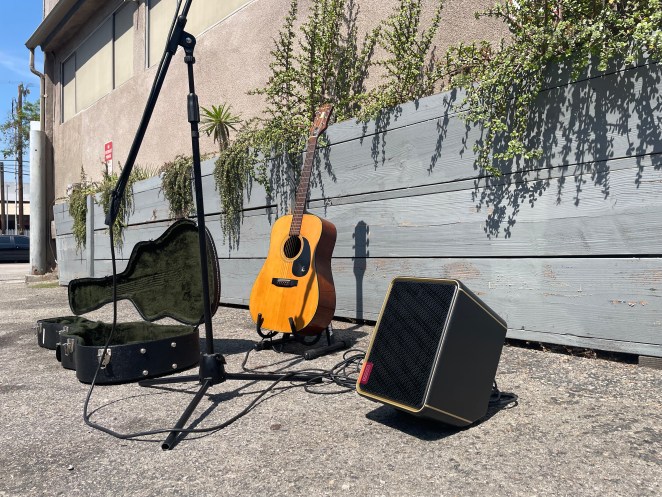
If you're looking for an all-in-one busking tool (PA, instrument amplifier, MultiFX unit, looper, Bluetooth speaker, etc.) I think the Spark EDGE hits the mark. Performers seeking full-band capabilities might be disappointed, but solo and duo acts looking to hit the streets couldn't do better than to grab one of these. Don't forget the battery.
